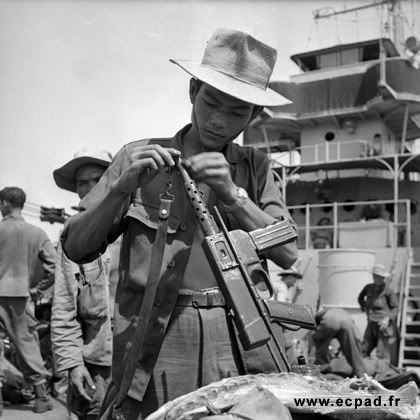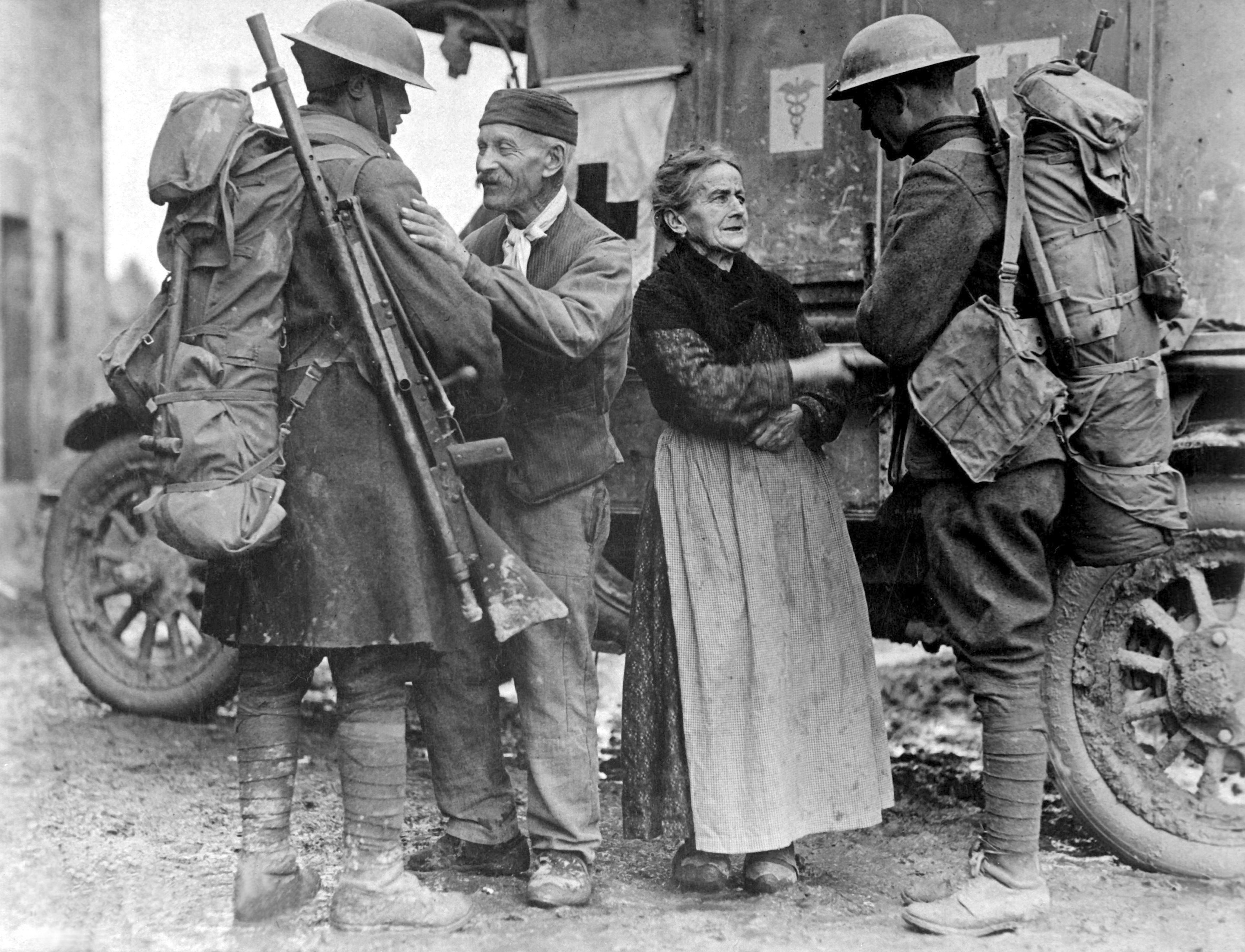The Mousqueton Modele 1854, named for General Antoine Hector Thésée Treuille de Beaulieu, was the first breechloader adopted by the French military. It was issued to the Cent Gardes (personal bodyguard) of Emperor Napoleon III and used a 9x46mm copper-cased pinfire cartridge. The action is a unique dropping block style that fires from an open bolt. The carbine itself was very light and handy, and to make it more imposing for the guards, it was issued with a meter-long saber bayonet.
A version without the bayonet was considered for more widespread cavalry use, but not adopted. Later on in the 1860s, some of these carbines were rebuilt to use centerfire ammunition, replacing the mainspring with a more traditional trigger guard. The Cent Gardes were disbanded in 1870, and the Modele 1854 left service at that time.
This carbine is part of the Liege arms museum’s display of military arms, and I’d like to thanks them for taking it out of their display so I can show it to you! If you are in Liege, stop in and see the museum!




Les Cent-Gardes were the Garde du Corps or lifeguard of Napoleon III and his family. They were a mounted troop but also serve on foot like typical halberdiers on palace duty, so they need a kind of ceremonial staff weapon. Napoleon was a tech crazy, so an advanced rifle with a long sword was the solution. On horse it was the sword and carbine and on foot it acted as a kind of halberd.
Cent-Gardes must be 1,80 m tall, almost 6 feet.
The official designation of the bayonet was Sabre-Lance. It offered 3 options to its user on horseback: carbine, saber or lance.
One point that you failed to mention was the way that cartridges were kept in place when the gun was loaded. To prevent the cartridge falling out, the copper rear (paper front) had a cannelure rolled into it which was held in the breech by a sprung indent. That way, the gun could be carried with a cartridge in the breech even on horseback. I think the reason that the gun was chosen for the Cent-Gardes was that Napoleon wanted foolhardily brave guards, and firing a gun, with no breech block would test their mettle. It is definitely something that would put me off shooting one.
Well someone should acknowledge this. I saw an article with diagram for this weapon, recommended by some commenter on this site with a link. Very nice now to see the actual item and the quality of manufacture. Thank you again for you dedication to the old, weird, unknown and unpopular, along with those objects in greater demand. Happy New Year.
Note to the above: When I viewed the video there were no comments showing, so believing I was the first and only person to post, I wrote my comment. It’s good to know someone else is looking. I affirm everything else.
Thanks for showing us another amusing curiosity.
Beaulieu is a common family name in Quebec. In Quebec, it is pronounced Bo lee u. All the vowels are hard.
Wishing you a noisy New Year … firing lots of exotic firearms,
Rob Warner
A minimum of 1.8 metres sounds just right for an elite bodyguard. What’s the point of being an emperor if you can’t lay on nthe swank?
Now I want to see pix of their uniforms.
https://s3-eu-west-1.amazonaws.com/bertrand-malvaux.com/web/images/1/produits3/49/produit_image2_30549_1540828825.jpg
https://gallica.bnf.fr/ark:/12148/btv1b530237316/f1.highres
I have never before heard of this Carbine in the 66 years since I first started collecting firearms.
It’s illustrated and described on p.39 of the 9th edition of Small Arms of the World (1969) by W.H.B. Smith and Joseph Smith.
Neither of the authors had a high opinion of the design.
Happy New Year to Ian and all.
cheers
eon
“Look out! The giant’s got a SWORD!”
“More importantly, he’s got a gun!”
“HE’S GOT A SWORD ON HIS GUN!”
Yes, you can laugh at this post.
Could the potential rate of fire of these experimental Treuille de Beaulieu carbines be faster than the later proofed Martini action?
I don`t think so. This gun had no extractor nor ejector, so you must extract the cartridge with the fingers.
I think that in 1854 the carbine may be a ‘modern’ gun but was not a practical one. It was dangerous, finicky and underpowered. Treuille de Beaulieu was a very competent designer, he invented the interrupted screw breech loading system for artillery pieces, but the ‘fusil-lance modèle 1854’ in my opinion was more a gadget for emperor’s pleasing than an effective gun, not a big problem for guard duty but the ‘escadron des cent-gardes’ also accompanied the emperor on campaign, as personal escort, in 1859 and in 1870. Tough they were not a combat unit I would like how this gun performed on hard conditions of a campaign.
Keep in mind that in 1854 any breechloading rifle was a novelty. And other, better-known (outside of France) designs were not noticeably more practical.
The main reason for the wide distribution of the Sharps breechloader, and its use by the British Army in the Crimean War, was that it was one of the few that actually worked as advertised.
This factor extended to early repeaters, as well. The British Needham, for instance, essentially combined the Henry underbarrel tubular magazine and lever-actuation with an action and cartridge very like the Colt Thuer conversion revolver. Up against the Henry, Spencer and etc., it was not a success.
Everybody was feeling their way back then. Well, except for Sharps, Spencer, and Henry.
cheers
eon
After a short research, the name is pretty amusing :
Treuille : small net fixed on a pole, can be used for fishing
de : from
Beaulieu : beau (beautiful or nice, depending on context) + lieu (place or pollock)
Interesting one of Frances most well known antique rifles(within the french gun community) but hardly known outside the country so are there other countries with interesting domestic antique weapons ie. Turkey Japan Germany springs to mind with the Dreyse and England with the Puckle gun